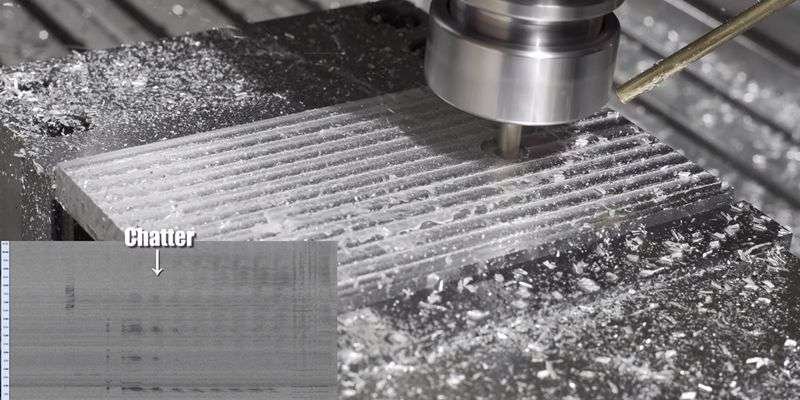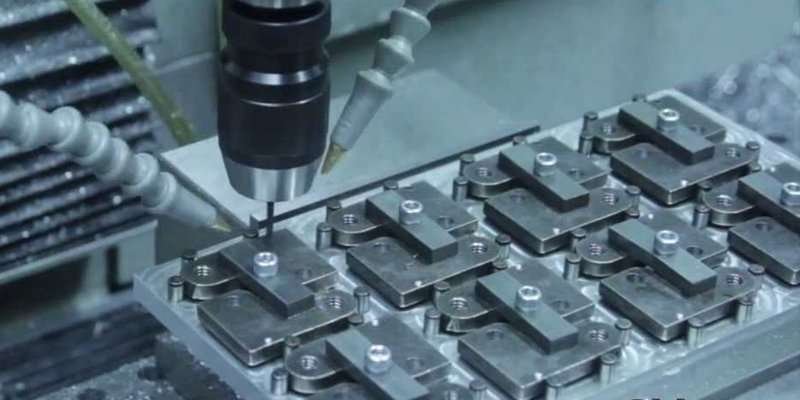The conventional methods of manufacturing steel parts are usually time-consuming and labor-intensive. Nowadays, manufacturers and product designers use the Computer Numerical Control (CNC) machining process to create different steel parts that are faster and more accurate.
Understanding the fundamentals of CNC steel machining is essential to successfully machine CNC steel parts that fit the intended applications and specifications.
What is CNC Steel Machining?
CNC steel machining is a manufacturing method that uses a computer program to control the movement and interaction of the machine tools with the workpiece material. This machining technology is suitable for fabricating steel materials to create various designs.
Although CNC machining is highly compatible with an extensive material range, steel is a popular material used for CNC prototyping and part manufacturing.

Various Steel Grades Used for CNC Machining
There are various steel grades that machinists use for machining projects in different applications. As a result, picking the suitable material grade for your products is essential to the success of your project. Each steel grade has various properties. This section discusses the typical steel grades for CNC steel parts.
4140 steel
The 4140 steel is an alloy with manganese, chromium, and molybdenum as its chemical composition. These alloying elements improve the steel grade’s toughness, ductility, and strength. Moreover, the chromium content enhances the grade’s resistance to corrosion. Therefore, product engineers across industries use this steel grade due to its excellent machinability and abrasion resistance.
However, it is not easy to weld the 4140 steel as it may require particular pre- and post-heat treatment. CNC steel parts such as nuts, couplings, bolts, spindles, and automotive parts are a typical use of this steel grade.
4140 Steel Mechanical Properties
- Hardness (Brinell): 197
- Yield Tensile Strength (MPa): 655
- Density (g cm-3): 7.87
- Shear Modulus (GPa): 80
- Elongation at Break (%): 19
4130 steel
The 4130 steel comprises higher degrees of alloying elements than the 4140 steel. This steel grade contains sulfur, phosphorus, iron, silicon, molybdenum, carbon, manganese, and chromium. These element constituents improve the steel grade’s thermal compatibility, machinability, and toughness, making it applicable to different construction purposes.
Additionally, engineers in the aircraft sector use 4130 steel in aircraft engine mountings. Since this CNC steel is cheaper and more effective, aircraft manufacturers often favor it over aircraft-grade steel in machining aircraft components. Nevertheless, this steel grade can be challenging to weld even though it can be heat-treated.
4130 Steel Mechanical Properties
- Hardness (Brinell): 217
- Yield Tensile Strength (MPa): 460
- Density (g cm-3): 7.87
- Shear Modulus (GPa): 80
- Elongation at Break (%): 20
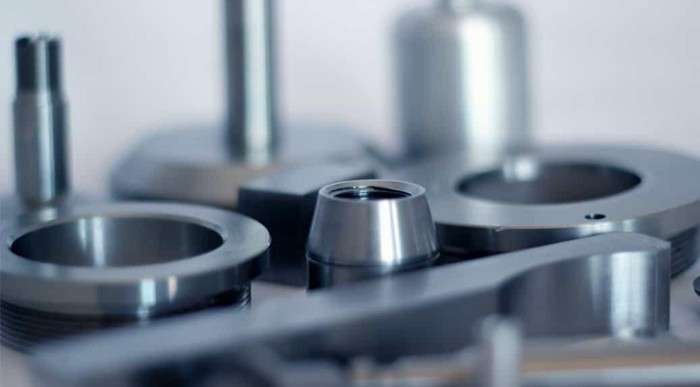
1018 steel
The 1018 steel grade or mild carbon steel comprises iron, sulfur, phosphorous, carbon, and manganese. Manufacturers often employ this steel grade in steel parts machining due to its high weldability. As such, it is the default metal choice for carburized CNC steel parts. However, it would be best to weld CNC steel parts only after hardening with the carburizing process.
Furthermore, 1018 steel offers excellent machinability aside from being remarkably weldable. This steel grade is well-suited for CNC processes such as turning and milling steel. Therefore, product engineers and manufacturers utilize this steel grade for shafts, spindles, tie rods, and other mold parts. However, the 1018 steel grade is quite expensive.
1018 Steel Mechanical Properties
- Hardness (Brinell): 131
- Yield Tensile Strength (MPa): 310
- Density (g cm-3): 7.87
- Shear Modulus (GPa): 78
- Elongation at Break (%): 15
1045 steel
This grade is a medium carbon steel containing manganese, iron, silicon, carbon, phosphorus, or sulfur. The 1045 steel is another versatile steel grade CNC steel parts manufacturers use to create different components. This steel grade is perfect for CNC steel machining applications where water resistance is crucial because it is tough and strong.
Moreover, 1045 steel offers important properties like high weldability and machinability, making it suitable for precision CNC machining. Therefore, manufacturers prefer this steel grade for applications that require higher speeds.
This steel grade applies to making studs, gears, bolts, and shafts. However, it is not ideal for manufacturing very strong components, even though it is relatively strong due to its average tensile strength and hardenability properties.
1045 Steel Mechanical Properties
- Hardness (Brinell): 170
- Yield Tensile Strength (MPa): 450
- Density (g cm-3): 7.87
- Shear Modulus (GPa): 60
- Elongation at Break (%): 12
1215 steel
This CNC steel grade has sulfur, iron, phosphorous, carbon, and manganese as its chemical composition. It is commonly known as free-machining steel due to its relatively high sulfur content.
1215 steel allows higher machining rates and prevents entanglements in CNC machines because it forms small chips during machining. However, the major challenge to this steel grade is that it is not weldable, and its relatively low carbon content limits its strength compared to other cold-drawn grades.
However, this steel grade is suitable for making automatic projects that require heavy machining. Typical applications of 1215 steel include hose fittings, studs, couplings, and screws.
1215 Steel Mechanical Properties
- Hardness (Brinell): 167
- Yield Tensile Strength (MPa): 415
- Density (g cm-3): 7.87
- Shear Modulus (GPa): 80
- Elongation at Break (%): 10
Surface Finishing Options for CNC Steel Parts
Machinists often use various surface finishing options to enhance CNC-machined steel’s aesthetics and functionality. Therefore, it would help to understand that different metals require specific surface finishes. Below are standard surface finishes applicable to CNC steel parts.
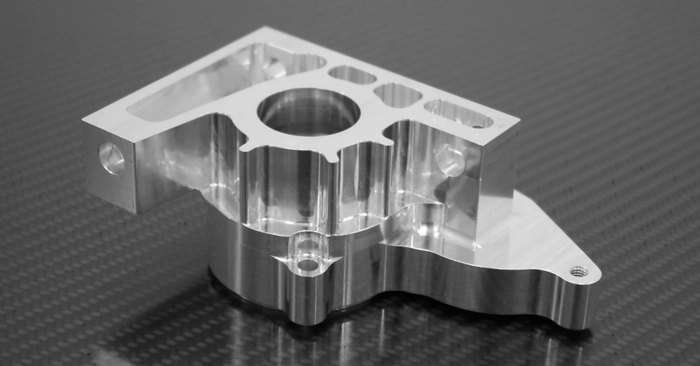
Powder Coating
Powder coating is a post-processing option that deposits dry powder on the surface of CNC steel parts, forming a protective layer. This coating layer has a thickness level that ranges from 0.15 (0.006”) to 0.3 mm (0.012”). Manufacturers use this finishing treatment to prevent machined steel parts from corrosion since bare steel can rust easily.
Carburizing
Carburizing involves heating the steel metal in the presence of carbon materials such as charcoal and carbon monoxide. This process primarily aims to harden the steel parts’ surface. Additionally, it improves the parts’ resistance to wear significantly.
Bead Blasting
The bead blasting technique offers CNC steel parts a uniform texture and improved surface finish. It involves shooting tiny spherical beads at the steel surface at high velocity. This procedure effectively eliminates the sharp edges, residual materials, or burrs on the steel parts, improving the surface quality of your parts.
Nickel Plating
Nickel plating finish electroplates CNC steel by forming a uniform, thin layer of nickel precisely 0.1mm on the machined parts. This process enhances the steel part’s resistance to wear and corrosive substances.
Challenges and Solutions for Machining Steel
Although machining steel is a common manufacturing method, there are some challenges to this metal machining process. However, there are ideal remedies to achieve a cost-effective and reliable CNC steel machining process, improving the process’s quality, safety, and efficiency. Below are typical challenges machinists encounter when machining steel and how to overcome them.
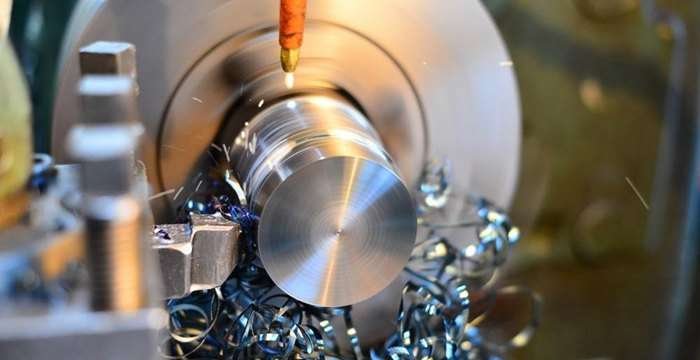
Material Chip Formation
During CNC steel machining, steel makes long, continuous chips likely to entangle and jam the machine, resulting in poor surface finishing.
However, when machining steel, use proper coolant and lubricants such as high-pressure coolant systems. It improves chip formation and removal, ensuring excellent surface finish.
Machining Force
CNC machines often use high cutting forces to fabricate steel parts. Consequently, it can cause premature tool failure because it strains the machine. However, ensuring the CNC machine has adequate structural integrity to withstand the applied machining forces would be best. In addition, use adaptive machining methods that regulate cutting parameters in real-time depending on the sensor feedback to improve tool engagement and applied forces.
Heat Generation
Steel machining produces excess heat, which may cause dimensional inaccuracies and thermal expansion in the finished steel parts. However, you can efficiently dissipate the heat when machining steel using the appropriate coolants and lubricants.
Tool Wear
The CNC cutting tools wear faster and need constant replacements due to the steel’s abrasiveness. As a result, tooling costs increase significantly. Nonetheless, utilize advanced tool coatings such as titanium aluminum nitride (TiAlN) or titanium carbo-nitride (TiCN) to enhance the lifespan of cutting tools and their resistance to wear. Likewise, using the appropriate cutting tool and cutting parameters helps to reduce tool wear.
Workpiece Distortion
CNC machined steel parts (for example 1045 steel) may suffer distortion or warping, especially when removing material in large amounts. However, to avoid any form of distortion when machining steel, reliable workholding solutions are advisable. Likewise, it would be best if you reduced overhangs. It reduces workpiece deflection and increases dimensional accuracy.
Advantages and Limitations of Steel CNC Machining
CNC machining steel parts require a great deal of machining skill and experience to achieve reliable results. Although steel CNC machining can be demanding, its benefits outweigh the limitations.
Advantages
- CNC steel parts exhibit remarkable resistance to wear and corrosion.
- Steel grades possess good machinability.
- Steel materials are compatible with a wide range of surface finishing options.
Limitations
- Although different steel grades have varying properties, not all are machinable. Therefore, certain steel grades are incompatible with applications that include making steel parts with intricate geometries.
- Certain steel grades are not ideal for making CNC steel parts subjected to extreme heat since steel grades have varying sensitivities.
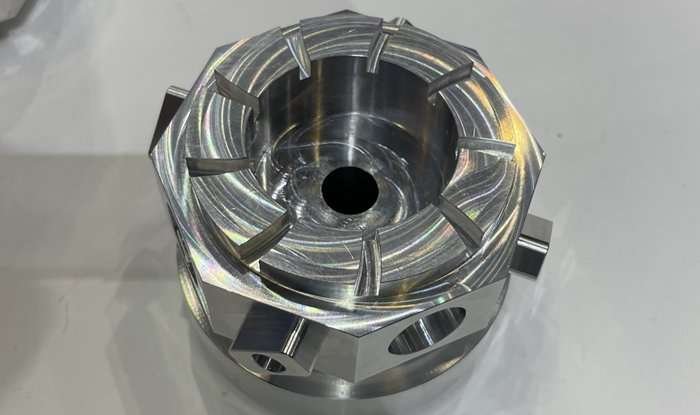
Applications of CNC Machined Steel Parts
Steel is one of the most used manufacturing metals. There are several applications of CNC steel machining across industries.
- Aerospace: These include turbine blades, brackets, engine parts, and structural parts.
- Medical Devices: Examples are medical equipment components, surgical instruments, and orthopedic implants.
- Automotive: Typical examples of steel parts in the automotive sector include brake system parts, engine parts, suspension components, transmission components, and other critical parts.
- Electronic: Components such as chassis, heatsinks, connectors, and other components used in electronic assemblies are typical examples of CNC-machined steel parts.
- Consumer Goods: These include laptops, smartphones, tablets, and other electronic gadgets.
Machining Steel vs. Aluminum: Which One is Suitable for Your Project?
Steel and aluminum are two commonly used materials for CNC machining. Usually, manufacturers choose between these two in most machining projects. However, here is a comparison that may help you to choose the ideal one for your project:
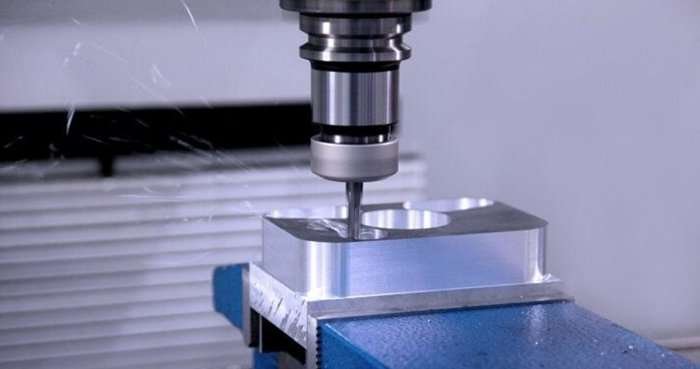
Machining Speed
Machinists can cut and form aluminum faster since it is lighter than steel. Likewise, heated aluminum cools more quickly than heated steel. Consequently, CNC steel manufacturing cycles are longer.
Machinability
Different factors, such as a metal’s strength and hardness, determine its machinability. Generally, a metal has lower machinability when it is extremely hard. Consequently, this principle applies to aluminum materials.
Aluminum has a lower Brinell hardness (around 15), while steel has a higher range (80 – 600). Also, aluminum has a lower yield strength and tensile strength than steel. Therefore, steel is less machinable but stronger than aluminum.
Cost
The cost of steel vs. aluminum goes a long way in deciding the one suitable for a machining project. Usually, such is the case when both metals are ideal for a certain project. Steel CNC machining is commonly more expensive than aluminum, even though there are various types and grades of both metals.
Get Steel CNC Machining Services at XinCheng Machining
If you find anything confusing about your CNC steel machining project and need the assistance of experts, XinCheng is the right partner for you.
With 3, 4, and 5-axis CNC machines, we specialize in providing steel CNC machining services that cater to your precise requirements. Whether your project is intricate geometries, tight tolerances, or challenging material properties, our team of skilled technicians and engineers are equipped to handle the most demanding projects.
Read more: Brass CNC Machining
Conclusion
Steel is a versatile material with many applications in different industries. The CNC steel machining process helps to make the best CNC steel parts suitable for different purposes despite the varying properties of the various steel grades.
FAQs
Can I cut steel with a CNC machine?
CNC machines are perfect for cutting metals such as steel. These machines offer a high degree of accuracy and precision required in machining steel.
How can I improve the machinability of steel materials?
You can add alloying elements such as sulfur and phosphorus to make steel materials more machinable.
What does copper do when added to steel?
Manufacturers often combine copper with steel because it is a strengthening element. It improves the creep-resistant strength and corrosion resistance of CNC steel parts.

